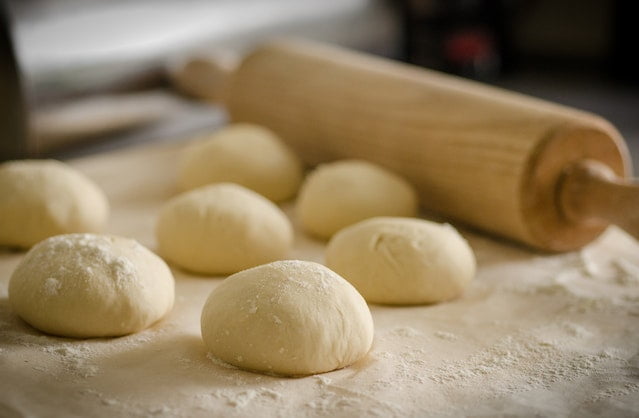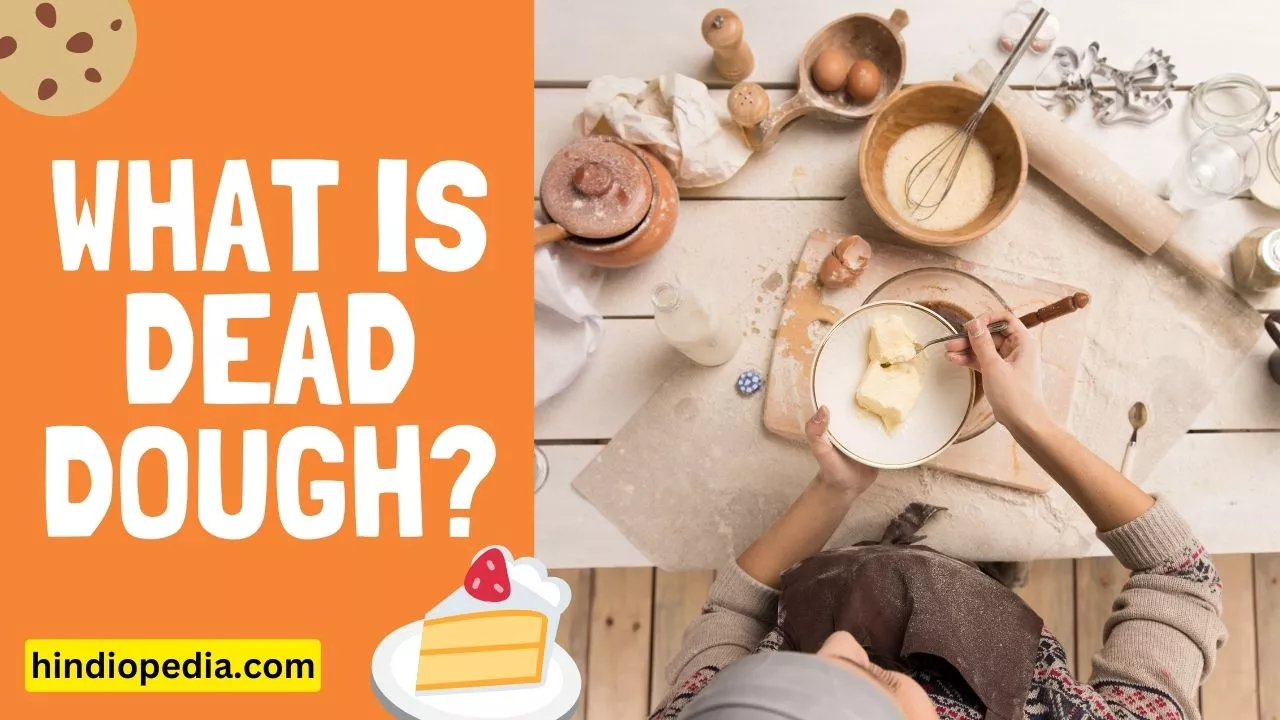What is Dead Dough? The Art of Making Perfect Dead Dough
Dead Dough, also known as a sourdough starter or mother dough, is a type of dough used in baking that has been fermented for an extended period of time.
Unlike traditional yeast doughs, Dead Dough uses wild yeast and natural bacteria to ferment the dough, giving it a unique flavor and texture.
In baking, Dead Dough is often used to add depth and complexity to bread, pastries, and other baked goods.
The purpose of this blog is to educate readers on the art of making perfect Dead Dough. We will cover everything from the definition and characteristics of Dead Dough to tips for making it at home.
Whether you are a seasoned baker or just starting out, this blog will provide you with all the information you need to make the perfect Dead Dough for all your baking needs.
What is Dead Dough?
Dead Dough is different from other doughs in that it is made using a mixture of flour and water that has been fermented with wild yeast and bacteria.
This results in a dough that is slightly sour, dense, and chewy. In contrast, traditional yeast doughs are made using commercial yeast and are typically lighter, fluffier, and sweeter.

The importance of using Dead Dough in baking lies in its unique flavor and texture. The natural fermentation process gives Dead Dough a distinctly sour taste that is highly prized in bread, pastries, and other baked goods.
Additionally, the dense, chewy texture of Dead Dough adds structure and stability to baked goods, making them ideal for things like sandwich bread, bagels, and croissants.
In short, Dead Dough is a versatile and flavorful ingredient that can elevate any baked good to the next level.
Why is it called Dead Dough?
The term “Dead Dough” is thought to have originated from the fact that the yeast in the dough has depleted its food supply and stopped producing carbon dioxide, resulting in a dough that appears to be dead or inactive.
However, the exact origin of the term “Dead Dough” is not well documented, and there may be other interpretations and explanations.
Characteristics of Dead Dough
- Texture and consistency: Dead Dough has a dense, chewy texture that sets it apart from other doughs. It should be slightly sour and sticky, but still easy to handle and shape.
- Appearance: Dead Dough should have a slightly mottled, irregular surface, with a smooth and shiny appearance. It should also have a uniform color, ranging from pale yellow to dark brown, depending on the type of flour used.
How to Identify Perfect Dead Dough?
To identify perfect Dead Dough, you should look for the following characteristics:
- A smooth and shiny surface
- Uniform color and texture
- An even distribution of bubbles throughout the dough
- A slightly sour aroma
- A dense, chewy texture that is easy to handle and shape
Making Dead Dough
Ingredients:
- 500g all-purpose flour
- 10g salt
- 10g sugar
- 10g instant yeast
- 300ml warm water
Instructions:
- In a large bowl, combine the flour, salt, sugar, and yeast. Stir to combine.
- Gradually add the warm water to the flour mixture, stirring until the dough comes together.
- Turn the dough out onto a floured surface and knead for about 8-10 minutes, until the dough is smooth and elastic.
- Place the dough in a greased bowl, cover it with plastic wrap, and let it rise for about 1 hour.
- After the dough has risen, punch it down and shape it into a ball.
- Place the dough back into the bowl, cover it with plastic wrap, and refrigerate for at least 12 hours or up to 3 days.
- Before using, take the dough out of the refrigerator and let it warm up for about an hour.
- Use the Dead Dough as desired in your baking recipes.
Enjoy your perfectly made Dead Dough!
Uses of Dead Dough
Dead Dough is a versatile ingredient that can be used in many different baked goods, including:
- Bread
- Pastries
- Crackers
- Pizza crusts
- Pancakes
- Waffles
- Bagels
- Croissants
- Pretzels
- And more!
Benefits of using Dead Dough in Baking
- Unique flavor: Dead Dough adds a unique sour flavor to baked goods that cannot be replicated by other doughs.
- Improved texture: The dense, chewy texture of Dead Dough adds structure and stability to baked goods, making them ideal for things like sandwich bread, bagels, and croissants.
- Increased nutrition: Dead Dough is a living food that contains beneficial bacteria and yeast, which can improve the nutritional value of baked goods.
- Longevity: Dead Dough has a longer shelf life than other doughs, which makes it a great ingredient for making baked goods that can be stored for several days or even weeks.
Common Mistakes in Making Dead Dough
#1 Over Mixing the Dough
Overmixing the dough can cause it to become tough and rubbery, making it difficult to handle and shape.
To avoid this mistake, mix the dough just until it comes together, then let it rest and ferment until it has doubled in size.
#2 Incorrect measuring of ingredients
Incorrect measuring of ingredients can cause the dough to become too dry or too wet, making it difficult to handle and shape.
To avoid this mistake, measure your ingredients carefully and use a kitchen scale if possible.
#3 Using too much yeast
Using too much yeast can cause the dough to rise too quickly, making it difficult to handle and shape. It can also lead to an overproduction of carbon dioxide, which can make the dough too airy and light.
To avoid this mistake, use the correct amount of yeast for the recipe and let the dough rise slowly at room temperature.
#4 Improper storage
Improper storage of Dead Dough can cause it to become overripe, sour, and moldy.
To avoid this mistake, store the dough in a well-sealed container in the refrigerator, or freeze it if you won’t be using it for a long time.
When you’re ready to use the dough, allow it to come to room temperature before shaping it and baking it.
The Bottom Line
Dead Dough is a type of dough that is allowed to ferment and age before it is baked. This type of dough is important in baking because it results in a more flavorful and tender baked good, due to the development of natural yeast and bacteria during the fermentation process.
Making Dead Dough requires careful attention to detail and patience, but the end result is well worth the effort. To ensure success, measure your ingredients carefully, avoid overmixing the dough, and store it properly.
Whether you are an experienced baker or just starting out, we encourage you to try making Dead Dough. With its rich flavor and tender texture, it is sure to become a staple in your baking repertoire. Happy baking!
References
- “The Science of Sourdough” by Dr. Rachel Smyth, Institute of Food Science & Technology, 2018.
- “The Art of Fermented Bread: A Guide to Making Sourdough” by Sarah Owens, Roost Books, 2016.
- “Sourdough: Recipes for Rustic Fermented Breads, Sweets, Savories, and More” by Sarah Owens, Ten Speed Press, 2018.
- “Bread Science: The Chemistry and Craft of Making Bread” by Emily Buehler, The University of North Carolina Press, 2006.
- “The Bread Baker’s Apprentice: Mastering the Art of Extraordinary Bread” by Peter Reinhart, Ten Speed Press, 2001.
Frequently Asked Questions
Sweet Dough: This type of dough is used to make sweet baked goods such as pastries, cakes, and sweet bread. It typically contains sugar, eggs, and fat, which contributes to its flavor and texture.
Yeast Dough: This type of dough contains yeast, which ferments the sugars in the dough and produces carbon dioxide, resulting in a light and airy texture. Yeast dough is commonly used for bread, rolls, and pizza.
Quick Bread Dough: This type of dough does not contain yeast and relies on chemical leaveners such as baking powder or baking soda to rise. Quick bread includes muffins, pancakes, and biscuits. The dough is typically mixed quickly and baked immediately, hence the name “quick bread.”
The lifespan of Dead Dough depends on several factors such as the type of flour used, the temperature, and the amount of yeast or bacteria present. Typically, Dead Dough can last for several days to a few weeks when stored properly in the refrigerator. However, the longer the dough is stored, the more complex and sour the flavor will become.
Dead Dough does not float in water. Unlike other types of dough that are lighter and tend to float due to yeast fermentation, Dead Dough is denser and heavier due to the extended fermentation process.
Yes, you can add yeast to Dead Dough, but it’s not typically recommended as Dead Dough is characterized by its long, slow fermentation process that does not rely on fresh yeast.







